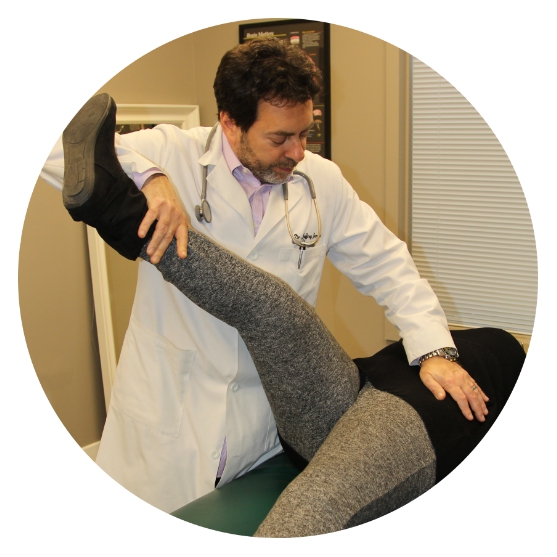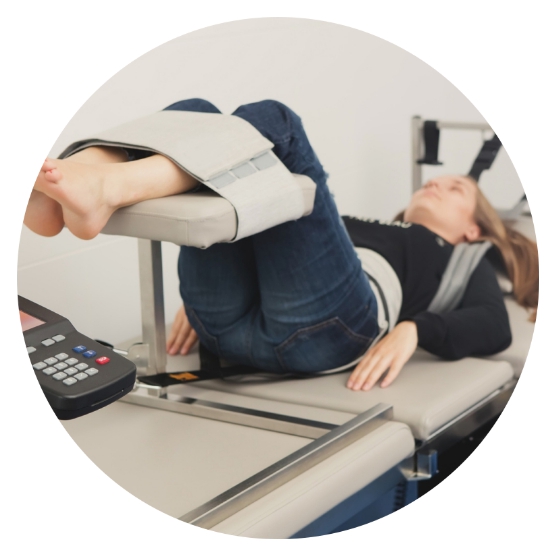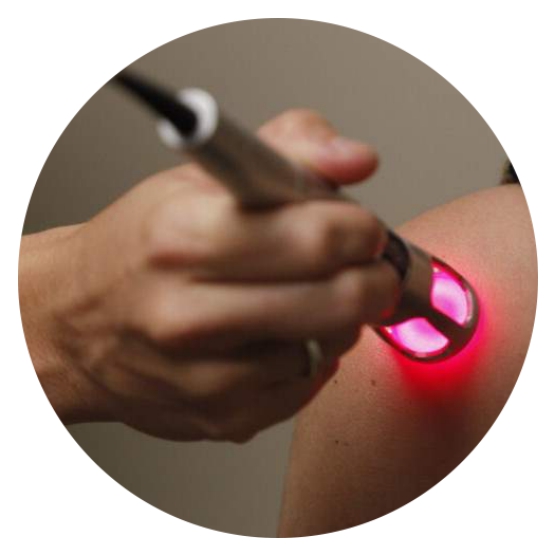Disc Protrusions
When a disc “herniates”, it means that the gel like substance in the center of the disc has pushed the outer layer of the disc (the annulus fibrosis) out, or it has pushed through the annulus. Imagine if you were to press your hand down on a jelly donut until the jelly began to push out the side. This is what it might look like.
In general, there are three to four types (or classifications) of disc herniations,
depending on the radiologist who is reading your MRI.
Disc Protrusions
Subtype I
This kind of herniation is where the gel like substance simply protrudes straight out of the disc. The most common place for this to occur is in the posterolateral position; that means to the back and outside portion of the disc. The reason this happens in this position is because there is a ligament called the Posterior Longitudinal Ligament (PLL) that runs along the back of the spine inside the spinal canal. The PLL acts as guard against the disc herniating straight back into the spinal cord. However, some herniated discs can, and do, push that ligament back and herniate into the spinal canal.
Causes
A protrusion is a common form of disc herniation that can cause severe low back pain, sciatica, and weakness. If you have a protrusion in your neck it’s also common to have pain radiate into your upper back or shoulder blades.
Disc Protrusions can be caused by anything that could weaken the spine and discs, such as:
a slip and fall
an auto accident
or any other trauma.
A disc protrusion can also be caused by:
a sedentary lifestyle and
lack of movement
…which leads to the disc drying out and weakening.
Once a disc is weakened, all it may take is that you make a move that you have a hundred times before,
like reaching into the back seat of your car to grab something and are gripped by paralyzing pain,
or you bend over to pick up a pencil, and experience excruciating pain.
Symptoms
Symptoms of disc protrusions, as with any disc herniation, can range from no pain to severe pain and radiation of pain into your extremities, or up and down your back. However, the damage of a disc protrusion often causes pain on one side, and can affect nerves on that side that can lead to radicular pain, which means pain into your limbs.
Because they are often focal, or one sided, they can cause pain, numbness, tingling, or even weakness radiating into one side of your body. If you have a disc protrusion in your neck, then you might experience pain in your arms or upper back. If you have a disc protrusion in your lower back, then you might experience pain or numbness and tingling in your back and into one of your legs.
Treatments
One of the most effective means of treating disc protrusions is Non-Surgical Spinal Decompression. Non-surgical spinal decompression allows us to reduce the compressive force on the disc, reducing the disc protrusion’s size and restoring normal function to the disc. This can then remove the pressure on pinched nerves caused by the disc protrusion, reducing and eliminating the pain caused by them.
In addition, In addition, we do many other custom therapies for you that are designed to improve strength and mobility to your spine, hips, and neck to reduce the likelihood of re-injury. Non-invasive, non-surgical decompression should always be tried before surgery after a proper neurological examination has been performed and it is determined that you are a good candidate for this procedure that has helped countless people avoid surgery when all else has failed them. Call us to schedule an appointment to see if we can help you.




